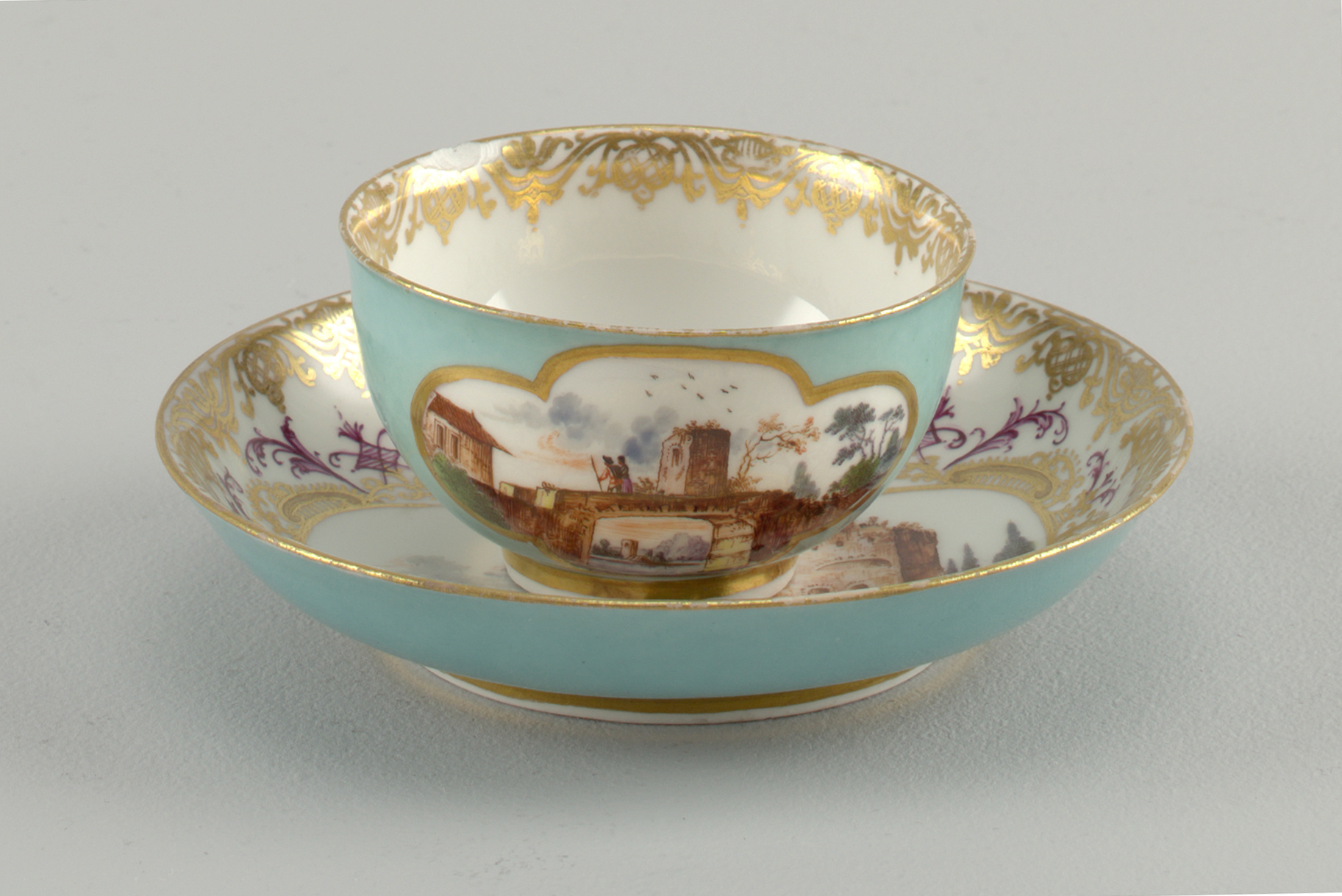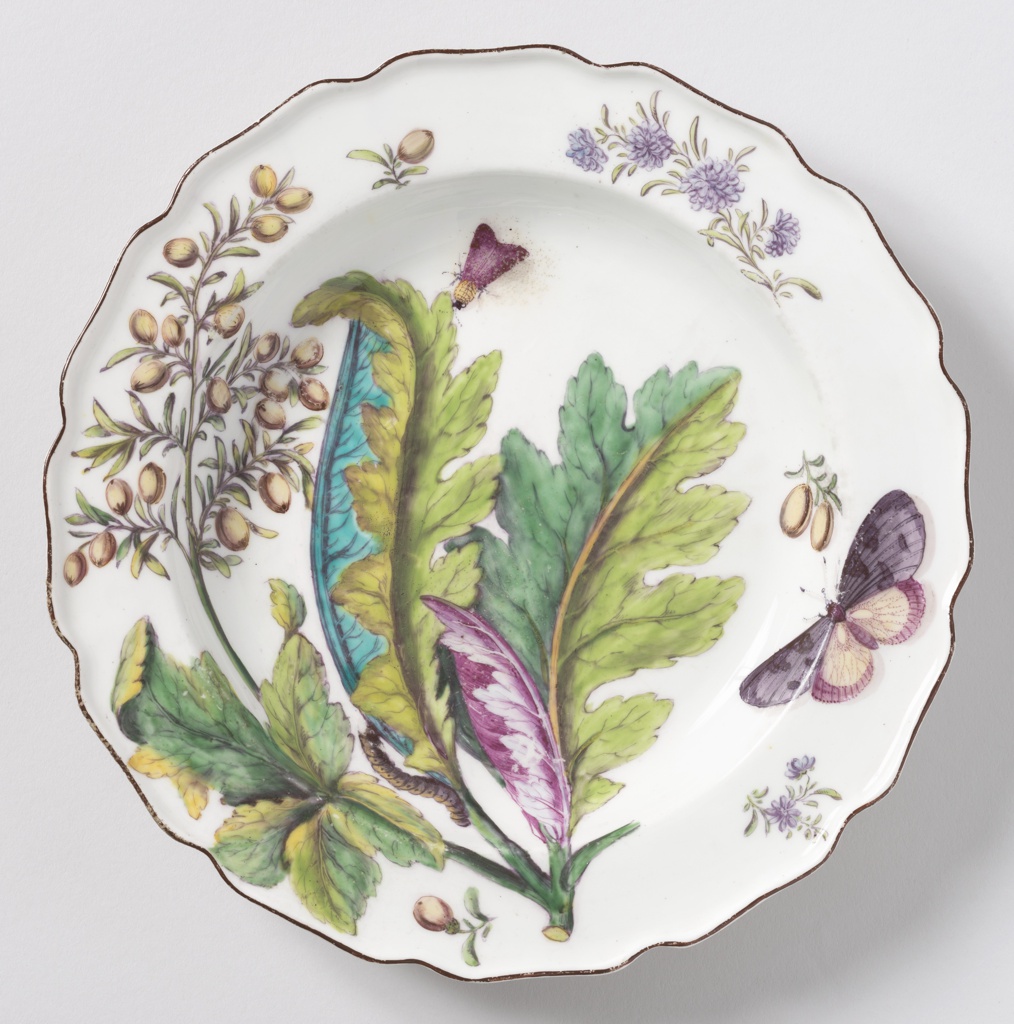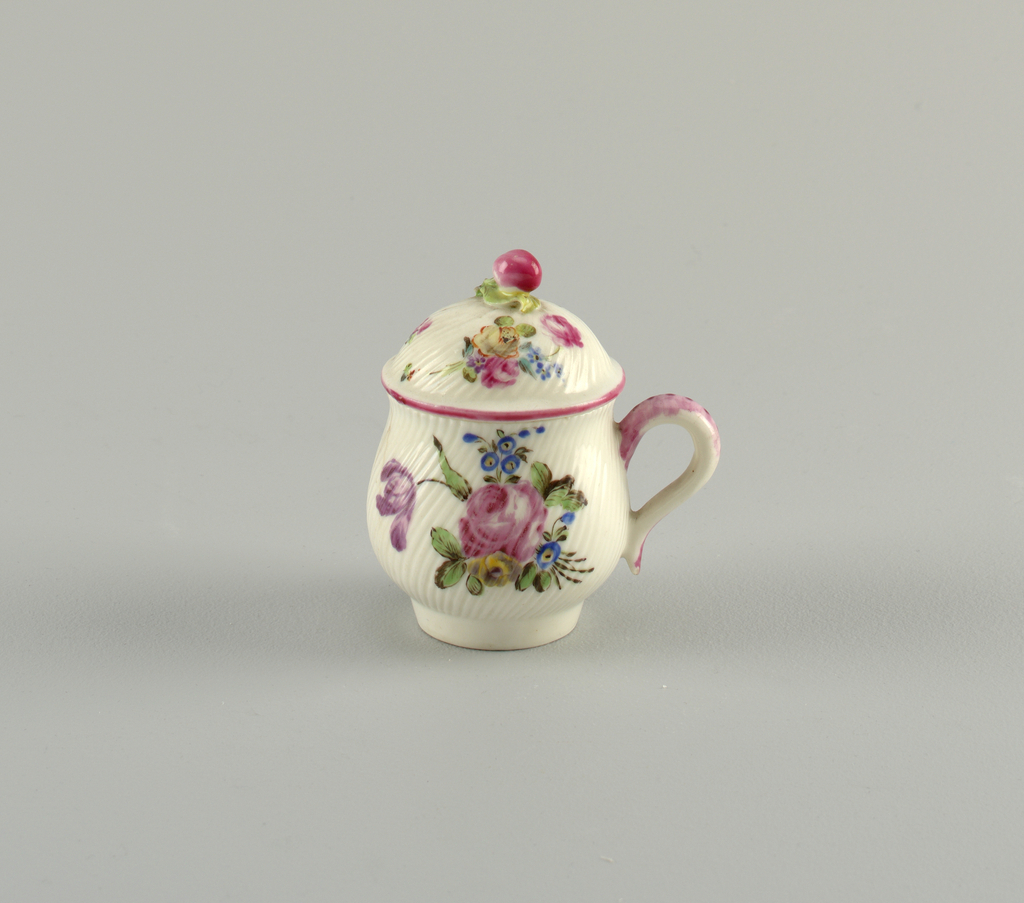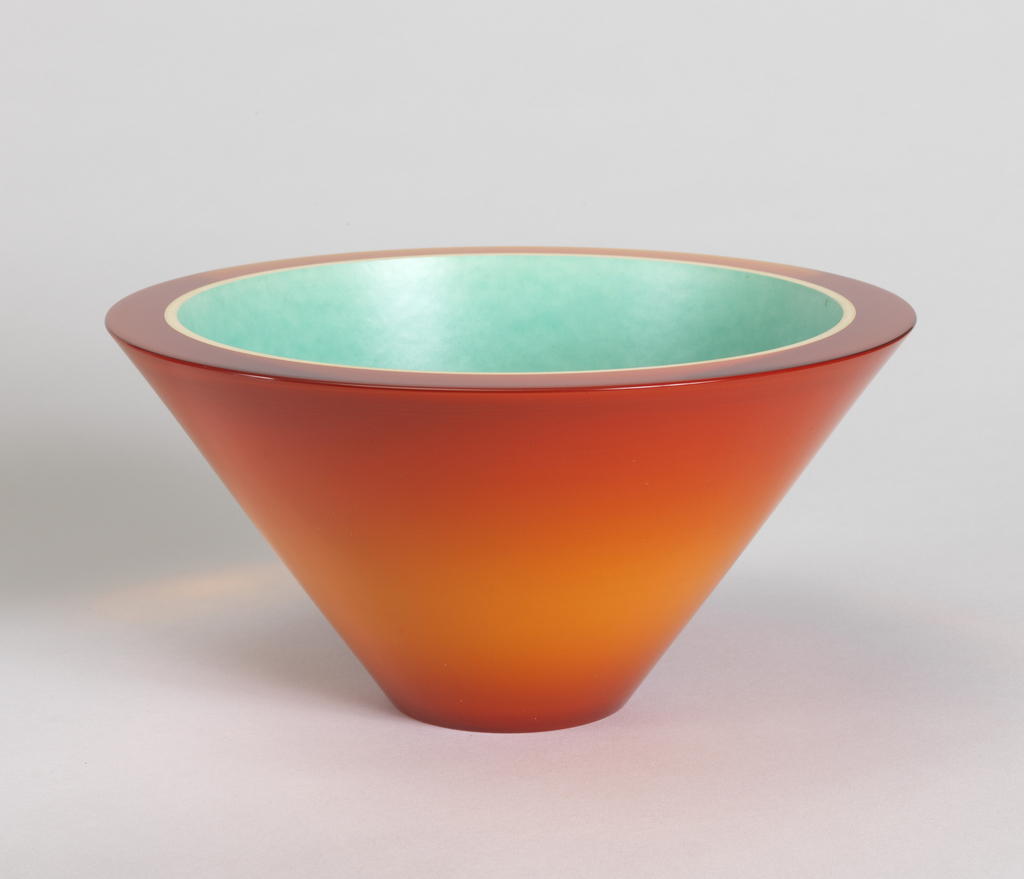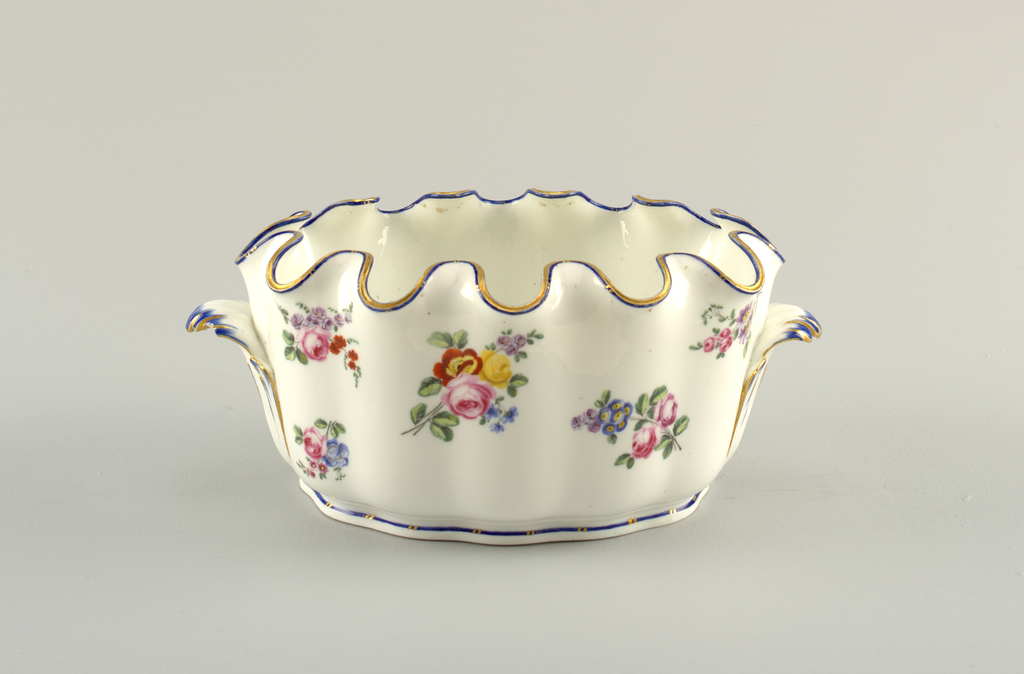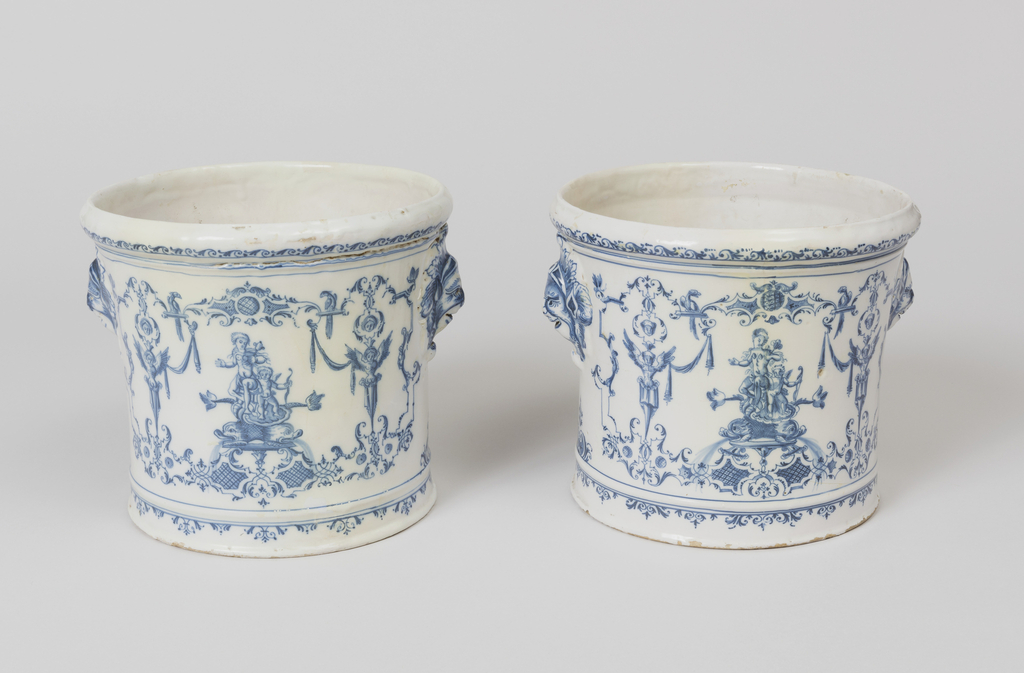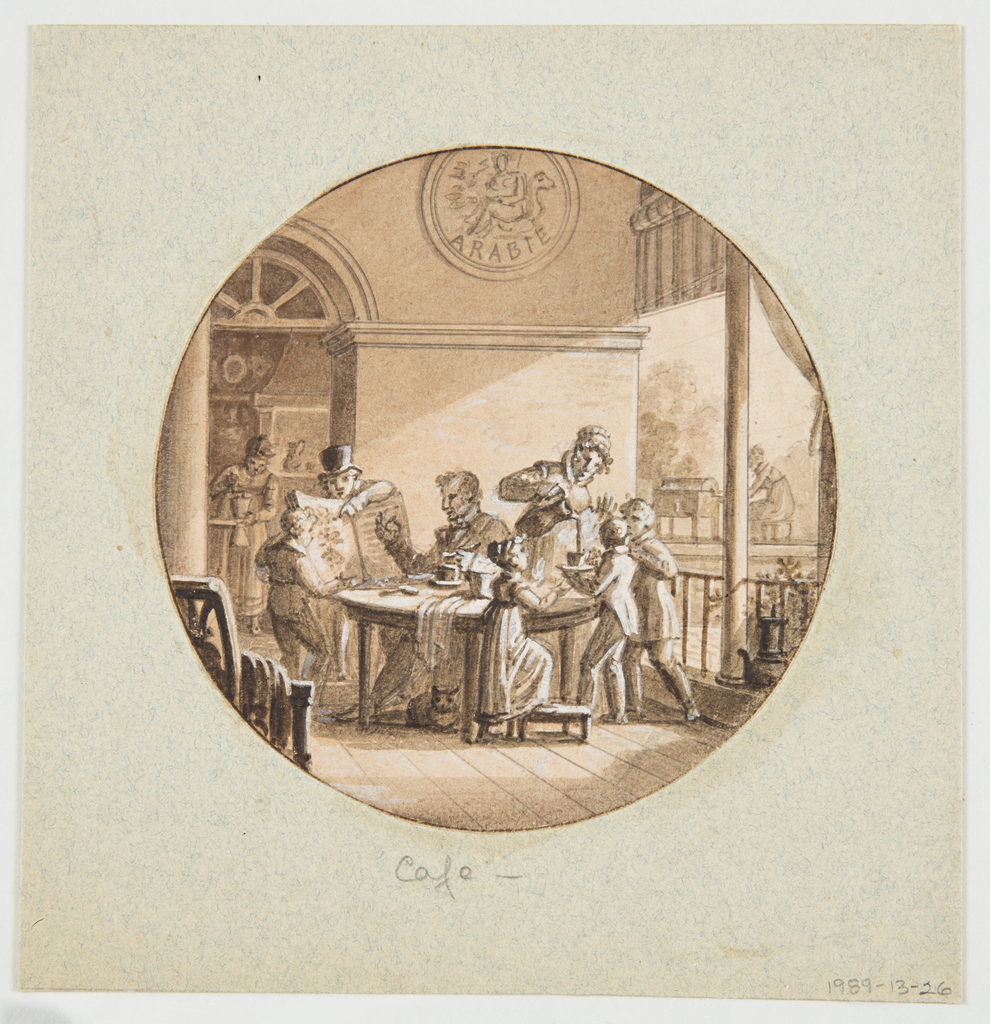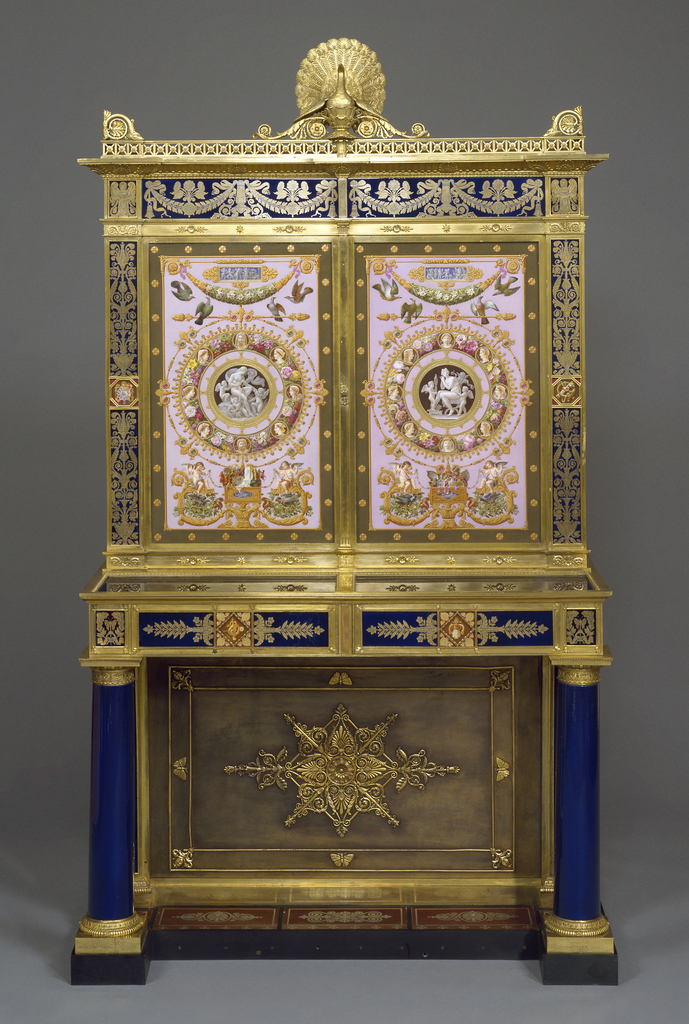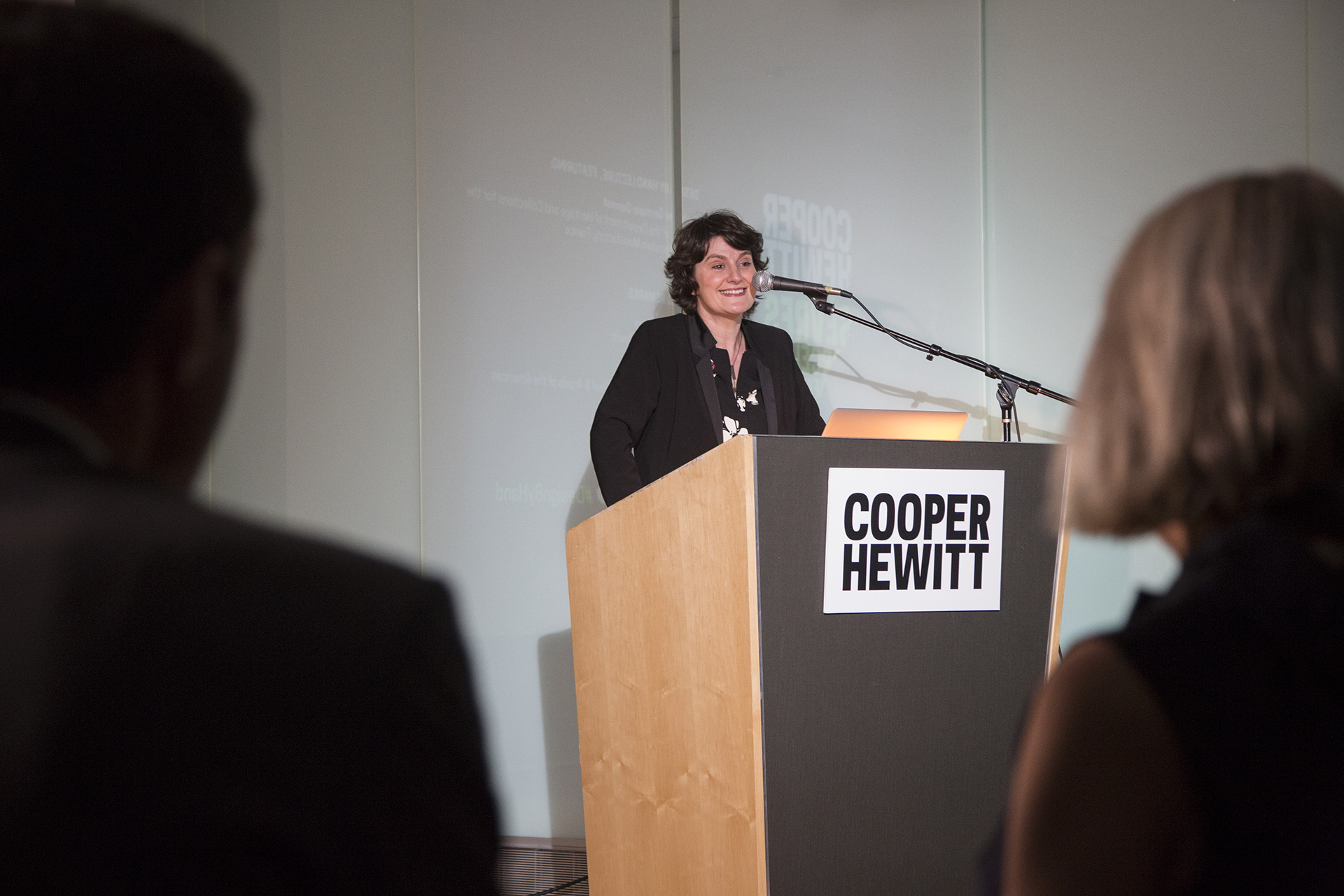Object conservators discuss how to repair chips in gilded porcelain
To celebrate the opening of Nature by Design: Botanical Expressions (December 7, 2019-January 10, 2021), Object of the Day this week will feature objects from the exhibition. The creation of what has come to be known as Hans Sloane plates derived from an increased interest in natural history in the eighteenth century, which led to...
On July 14th, France and many other nations around the world celebrated French National Day, also known as Bastille Day. The date is the anniversary of the storming of the Bastille, which took place in 1789, and marked a turning point in the French Revolution. These days, this national occasion is usually marked with parades,...
This bowl sends a colorful optical jolt by balancing complementary hues; the red-orange of the exterior against the turquoise of the interior. The interplay of the warm red-orange and the cool turquoise results in visual excitement as the eye shifts back and forth between the two. Adding to the interplay is the juxtaposition of the two...
This verrière defines the classification of objects we call decorative arts: something that is both beautiful and functional. The function of the verrière is to cool wine glasses by inverting them and resting the feet and stems on the curved rim of the vessel, with the bowls immersed in cold water or ice. This type...
In the days before under-counter wine fridges, seaux à bouteilles, buckets made of earthenware or porcelain, were filled with ice water and used to keep bottles of wine cool. Their use continues to this day in the form of metal ice buckets used to keep white wine chilled table-side at fancy restaurants. When these objects were made,...
Café from the Service des Objets de Dessert, dated 1819-20, was drawn by Jean-Charles Develly as part of a table service for the Royal Sèvres Porcelain Manufactory. The factory was founded in Vincennes in 1740 and later relocated to Sèvres in 1756. In 1800, Alexandre Brongniart (1770–1847) was chosen as the administrator of the factory...
The theme of this Royal Jewel Cabinet from France, dated 1824-26, is no doubt indulgence in all forms – especially love and extravagance. Its rich iconography displays symbols of love and jewels, where antiquity is mixed with early-nineteenth century depictions of flowers.[1] The cabinet is constructed of porcelain plaques in a gilt-bronze armature. A golden...
For our seventh Design by Hand series, Christine Germain-Donnat, Director of the Department of Heritage and Collections for the Sèvres Porcelain Manufactory, is the featured speaker. She discusses the extraordinary history of Sèvres porcelain.
